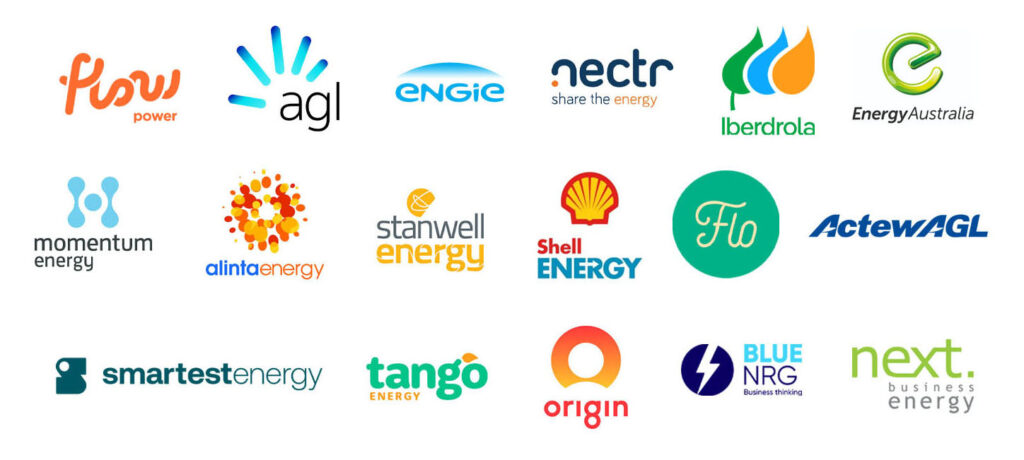Australia has committed to a national net zero target by 2050, but there are still a number of hurdles to reaching that goal and the energy transition phase will require careful management.
The roadmap to getting there is relatively simple on paper, but the reality is far more complex. Coal and gas generators must be phased out and replaced with renewable sources of energy. In tandem, the gas and transport networks must be electrified.
The challenge is moving away from centralised energy generators to distributed, intermittent sources of energy backed up by battery storage.
To reach Net Zero and combat climate change and the price volatility it will create in the future, Australia needs a successful energy transition, and there are certain stages that must be taken to get it right.
Increase renewables generation and reduce fossil fuel dependency
The first is to increase low-emissions generation and reduce the country’s dependence on fossil fuels.
This is already happening. Almost 25 per cent of the country’s energy generation matrix comes from renewable energy and the remaining 75 per cent from fossil fuels.
The ratio of renewables in the matrix is increasing and gathering pace year on year.
The increased uptake of battery storage will allow the storage of electricity to protect against intermittency – when the sky is dark and the winds are still.
Transmission and distribution
Australia’s energy grid was designed and built around a different reality to what we are facing today.
The grid was designed as a one-way system; energy was generated and sent over transmission lines to substations where it was then distributed to the end-user and consumed at the endpoint.
Things have drastically changed. Instead of a relatively small number of large generators, we now have a large (and growing) system of intermittent distributed generators.
In order to take full advantage of this change, the system must be upgraded with advanced transmission and distribution systems that connect generators across the country with the ability to scale up or down on demand.
The electrification of the country’s vehicle fleet, as well as cooking and heating systems in the near future, will exacerbate the need for fast, agile and responsive transmission and distribution.
Getting the energy mix right
The last stage consists in developing a net-zero electricity system.
Although there are different scenarios that showcase how to achieve this goal, the best information today indicates that the most efficient way would be to pursue a highly renewable energy mix with a limited amount of gas, which could then be offset.
Aiming to achieve a 100 percent renewable energy matrix would imply higher efforts to be able to ensure supply when demand is high and weather conditions get challenging.
As technology develops further in the future, gas could be phased out if there is enough dispatchable battery storage to replace it.
The three challenges we face in Australia’s Energy Transition
There are three major challenges to overcome in Australia’s energy transition and these are reliability, a sufficient transmission and distribution network, and the thorny issue of excess daytime demand and huge evening demand spikes.
Reliability relates to having enough supply to meet demand when renewable energy is not being generated.
Transmission and Distribution relates to getting energy to where it is needed when it is needed.
The third issue relates to solving the Duck Curve, which presents as very low daytime prices and very high prices at night when demand is high and supply is tight.
Reliability
One of the first questions people ask about renewable energy is: “What happens when it’s cold, dark and there is no wind?”
A reliable system supplied by solar and wind power requires a combination of energy storage and dispatchable capacity that is available on demand.
There have been several attempts by successive governments to create a “reliability mechanism”, but no national solution has ever been enacted.
As a result, state governments have driven growth in renewable energy generation and prices have generally trended down. Coal plant closures have also been brought forward.
However, there has been a failure of governments and the industry to agree on market reforms to deliver and pay for dispatchable capacity.
State governments have resorted to unilateral intervention, and warnings have been sounded. If such interventions continue unchecked, uncertainty will be created and this will lead to higher costs and electricity prices.
Moving electricity to where and when it is needed
Another challenge in the energy transition process is getting electricity to where it is needed when it is needed.
The grid must be reshaped in such a way that it can connect widely distributed solar and wind power and storage.
Australia has a huge landmass and generation sites are often very far from where the end-user is actually located.
In addition, electricity must be able to get to parts of the country that may be experiencing weather-driven shortages.
State governments have made some progress in creating and connecting renewable energy zones. Interconnectors are also being built, such as the EnergyConnect project between New South Wales and South Australia.
But there is hesitancy on the part of investors who need confidence that they can turn an acceptable financial return for their efforts to connect the different states.
As yet, there is no agreement on how major interconnectors will be paid for in a renewable energy concentrated grid.
Storing excess rooftop solar
The uptake of rooftop solar by Australian households and businesses has been astonishing. Official figures show that one in four homes have rooftop PV panels installed, but this does create problems for the grid.
Australia’s daily energy demand pattern is quite predictable.
There is a spike in demand in the morning as people start their daily routines and get ready for work before solar begins to flood into the grid.
As people head to work and the sun gets stronger, demand bottoms out in a trough due to increased levels of behind-the-meter solar.
As the day progresses into the late afternoon, solar output drops as the sun sets.
This coincides with an explosion in demand in the evening as people get home from work and begin cooking evening meals and sit down to watch television for the night.
This phenomenon is known as the Duck Curve and is one of the reasons why coal generation retirement is being brought forward.
Daytime rooftop solar output leads to low and often, negative demand from the grid, causing prices to crash to record lows and often negative pricing.
The challenge here is to encourage energy storage during periods of low demand so it can be used during peak demand periods.
Tariff structures also need to be created and carefully managed to act as a solar sponge.
How can the energy transition impact energy costs?
Coal generators are struggling to remain profitable in the current scenario due to the fact that they suffer from inertia, which is the long process of firing the plant up to start generating electricity.
In the current scenario, coal plants can barely turn a profit given excess supply and low demand during the day.
They cannot be turned off and turned back on because this would lead to even further financial losses.
As a result, coal plant closures such as Eraring and Yallourn are being brought forward and more announcements about the closure timeline are expected in the near future.
The government did introduce legislation to prevent abrupt closures such as the 2017 event at Hazelwood in Victoria’s Latrobe Valley, which sent electricity prices through the roof.
But the haphazard way in which renewable energy generation is flooding into the market, coupled with more early coal closures is causing uncertainty in the market, which is why prices are tending to increase.
To reduce the impact of this transition, businesses may want to lock in electricity rates through a wholesale forward purchasing contract.
Businesses are able to lock in these rates for 12-60 months in advance, even if they are currently under an existing contract.
Market timing is key to securing advantageous rates and our Energy Management Consultants can advise you on the best time to put a tender to the market.
What will the future look like?
The future of the National Energy Market will be very different to what we know today. Australia’s Clean Energy Council states that a global transition to lower emissions and a final goal of net zero emissions is both necessary and inevitable.
It also states that Australia’s transition to lower emissions in the electricity sector is already underway.
Australia will need to implement short-term market reforms in an agile and responsive manner to keep up with the changing realities that will be presented as a result of the energy transition process.
We will also need to continue to push technological developments that will eventually create power generation to replace gas generation as the country moves to close the final gap to create a zero-emissions future for the National Energy Market.
Failure to do this will mean uncoordinated policies which will lead to a slower transition, higher costs, investment uncertainty and the risk of shortages.
Follow the latest energy sector news
Infrastructure gaps may affect energy supply and prices in the country as well as your energy costs.
That’s why, as an energy broker, we’re committed to keeping you informed about the latest developments in the energy sector.
You can read our blog and news section or sign up for our monthly newsletter to get updates directly in your inbox.
If you want to create a positive impact on your business’ electricity or natural gas bills, get in touch with our Energy Experts.
We’ll be your guide through the energy cost-reduction process.
Drop us an email at info@leadingedgeenergy.com.au, contact your Leading Edge Energy management consultant or call us at 1300-852-770 for an obligation-free consultation about how you can reduce your energy costs.
We source, analyse, compare and rank commercial, industrial and multisite energy quotes. Obligation Free.
Chat with one of our experienced consultants today and get the insights your business needs to help manage the risks associated with volatile electricity and natural gas markets. Our energy procurement service is obligation-free and provides a time-saving way of securing lower energy rates from our panel of energy retailers.















